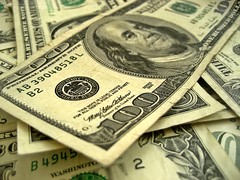So Long, US Dollar
By Marin Katusa, Casey Research
There’s a major shift under way, one the US mainstream media has left largely untouched even though it will send the United States into an economic maelstrom and dramatically reduce the country’s importance in the world: the demise of the US dollar as the world’s reserve currency.
For decades the US dollar has been absolutely dominant in international trade, especially in the oil markets. This role has created immense demand for US dollars, and that international demand constitutes a huge part of the dollar’s valuation. Not only did the global-currency role add massive value to the dollar, it also created an almost endless pool of demand for US Treasuries as countries around the world sought to maintain stores of petrodollars. The availability of all this credit, denominated in a dollar supported by nothing less than the entirety of global trade, enabled the American federal government to borrow without limit and spend with abandon.
The dominance of the dollar gave the United States incredible power and influence around the world… but the times they are a-changing. As the world’s emerging economies gain ever more prominence, the US is losing hold of its position as the world’s superpower. Many on the long list of nations that dislike America are pondering ways to reduce American influence in their affairs. Ditching the dollar is a very good start.
In fact, they are doing more than pondering. Over the past few years China and other emerging powers such as Russia have been quietly making agreements to move away from the US dollar in international trade. Several major oil-producing nations have begun selling oil in currencies other than the dollar, and both the United Nations and the International Monetary Fund (IMF) have issued reports arguing for the need to create a new global reserve currency independent of the dollar.
The supremacy of the dollar is not nearly as solid as most Americans believe it to be. More generally, the United States is not the global superpower it once was. These trends are very much connected, as demonstrated by the world’s response to US sanctions against Iran.
US allies, including much of Europe and parts of Asia, fell into line quickly, reducing imports of Iranian oil. But a good number of Iran’s clients do not feel the need to toe America’s party line, and Iran certainly doesn’t feel any need to take orders from the US. Some countries have objected to America’s sanctions on Iran vocally, adamantly refusing to be ordered around. Others are being more discreet, choosing instead to simply trade with Iran through avenues that get around the sanctions.
It’s ironic. The United States fashioned its Iranian sanctions assuming that oil trades occur in US dollars. That assumption – an echo of the more general assumption that the US dollar will continue to dominate international trade – has given countries unfriendly to the US a great reason to continue their moves away from the dollar: if they don’t trade in dollars, America’s dollar-centric policies carry no weight! It’s a classic backfire: sanctions intended in part to illustrate the US’s continued world supremacy are in fact encouraging countries disillusioned with that very notion to continue their moves away from the US currency, a slow but steady trend that will eat away at its economic power until there is little left.
Let’s delve into both situations – the demise of the dollar’s dominance and the Iranian sanction shortcuts – in more detail.
Signs the Dollar Is Going the Way of the Dodo
The biggest oil-trading partners in the world, China and Saudi Arabia, are still using the petrodollar in their transactions. How long this will persist is a very important question. China imported 1.4 million barrels of oil a day from Saudi Arabia in February, a 39% increase from a year earlier, and the two countries have teamed up to build a massive oil refinery in Saudi Arabia. As the nations continue to pursue increased bilateral trade, at some point they will decide that involving US dollars in every transaction is unnecessary and expensive, and they will ditch the dollar.
When that happens, the tide will have truly turned against the dollar, as it was an agreement between President Nixon and King Faisal of Saudi Arabia in 1973 that originally created the petrodollar system. Nixon asked Faisal to accept only US dollars as payment for oil and to invest any excess profits in US Treasury bonds, notes, and bills. In exchange, Nixon pledged to protect Saudi oilfields from the Soviet Union and other potential aggressors, such as Iran and Iraq.
That agreement created the foundation for an incredibly strong US dollar. All of the world’s oil money started to flow through the US Federal Reserve, creating ever-growing demand for both US dollars and US debt. Every oil-importing nation in the world started converting its surplus funds into US dollars to be able to buy oil. Oil-exporting countries started spending their cash on Treasury securities. And slowly but surely the petrodollar system spread beyond oil to encompass almost every facet of global trade.
The value of the US dollar is based on this role as the conduit for global trade. If that role vanishes, much of the value in the dollar will evaporate. Massive inflation, high interest rates, and substantial increases in the cost of food, clothing, and gasoline will make the 2008 recession look like nothing more than a bump in the road. This will be a crater. The government will be unable to finance its debts. The house of cards, built on the assumption that the world would rely on US dollars forever, will come tumbling down.
It is a scary proposition, but don’t bury your head in the sand because countries around the world are already starting to ditch the dollar.
Russia and China are leading the charge. More than a year ago, the two nations made good on talks to move away from the dollar and have been using rubles and renminbi to trade with each other since. A few months ago the second-largest economy on earth – China – and the third-largest economy on the planet – Japan – followed suit, striking a deal to promote the use of their own currencies when trading with each other. The deal will allow firms to convert Chinese and Japanese currencies into each other directly, instead of using US dollars as the intermediary as has been the requirement for years. China is now discussing a similar plan with South Korea.
Similarly, a new agreement among the BRICS nations (Brazil, Russia, India, China, and South Africa) promotes the use of their national currencies when trading, instead of using the US dollar. China is also pursuing bilateral trades with Malaysia using the renminbi and ringgit. And Russia and Iran have agreed to use rubles as a means of currency in their trades.
Then there’s the entire continent of Africa. In 2009 China became Africa’s largest trading partner, eclipsing the United States, and now China is working to expand the use of Chinese currency in Africa instead of US dollars. Standard Bank, Africa’s largest financial institution, predicts that $100 billion worth of trade between China and Africa will be settled in renminbi by 2015. That’s more than the total bilateral trade between China and Africa in 2010.
The idea of moving away from the dollar is also finding support from major international agencies. The United Nations Conference on Trade and Development has stated that “the current system of currencies and capital rules that binds the world economy is not working properly and was largely responsible for the financial and economic crises.” The statement continued, saying “the dollar should be replaced with a global currency.” The International Monetary Fund agrees, recently arguing that the dollar should cede its role as global reserve currency to an international currency, which is in effect a basket of national currencies.
There is also a host of countries that have started using their own currencies to complete oil trades, a move that strikes right at the heart of US-dollar dominance. China and the United Arab Emirates have agreed to ditch the dollar and use their own currencies in oil transactions. The Chinese National Bank says this agreement is worth roughly $5.5 billion annually. India is buying oil from Iran with gold and rupees. China and Iran are working on a barter system to exchange Iranian oil for Chinese imported products.


